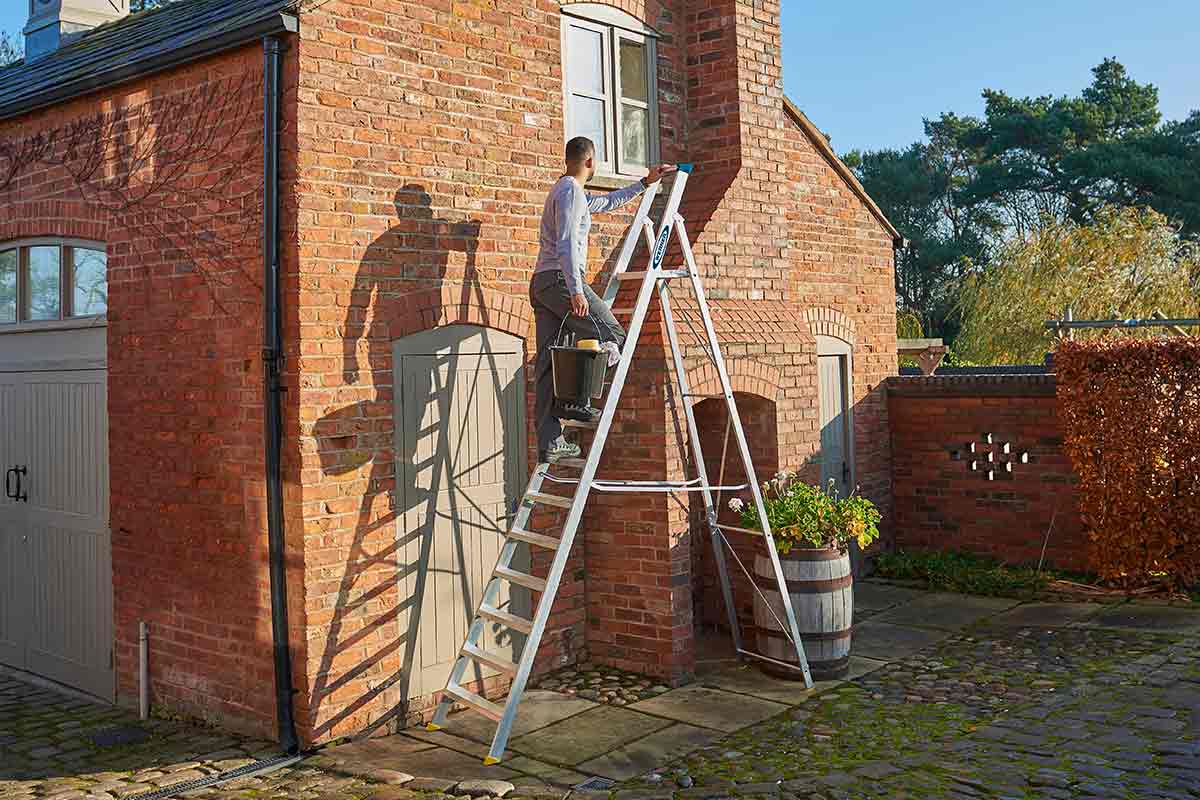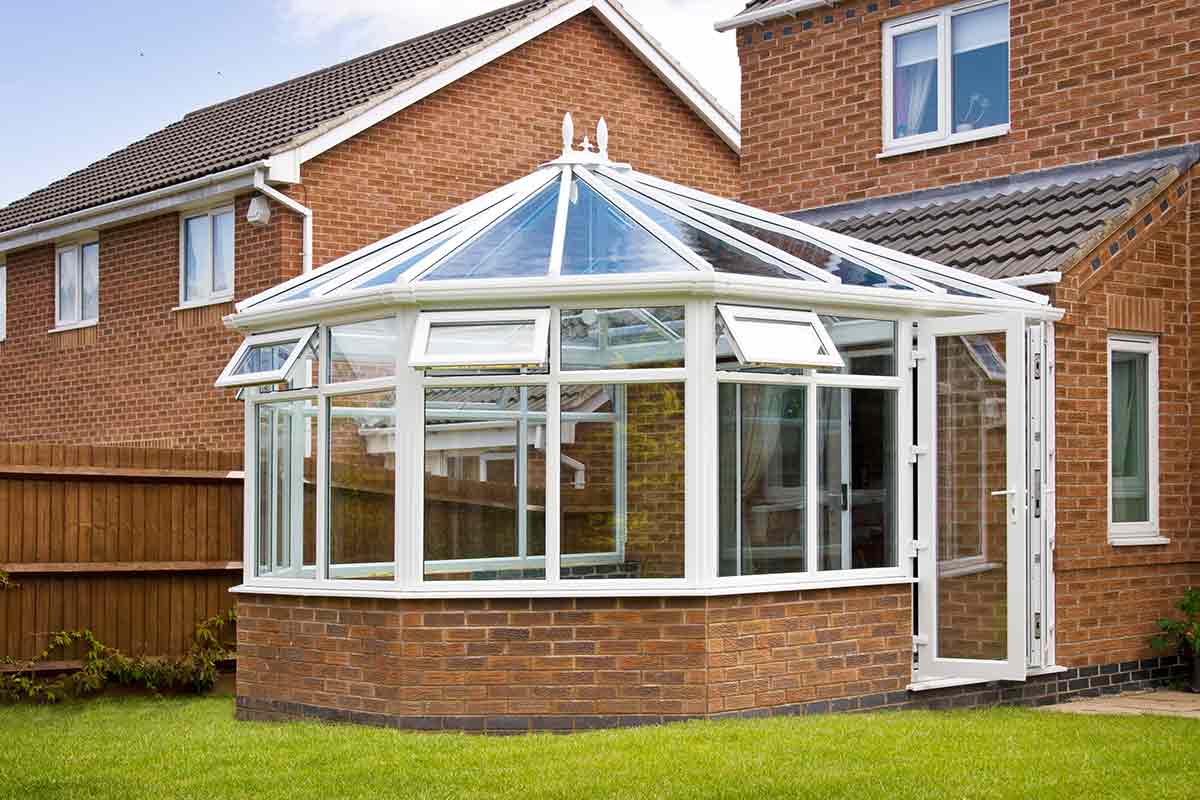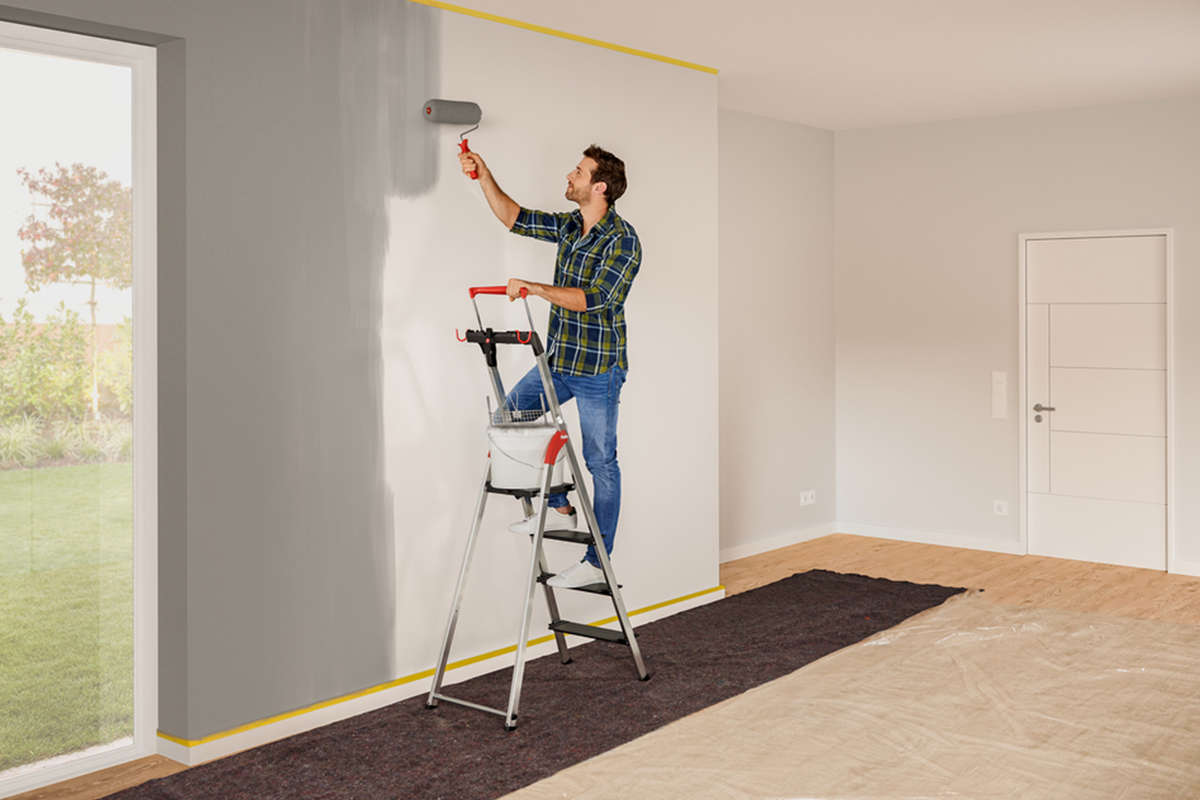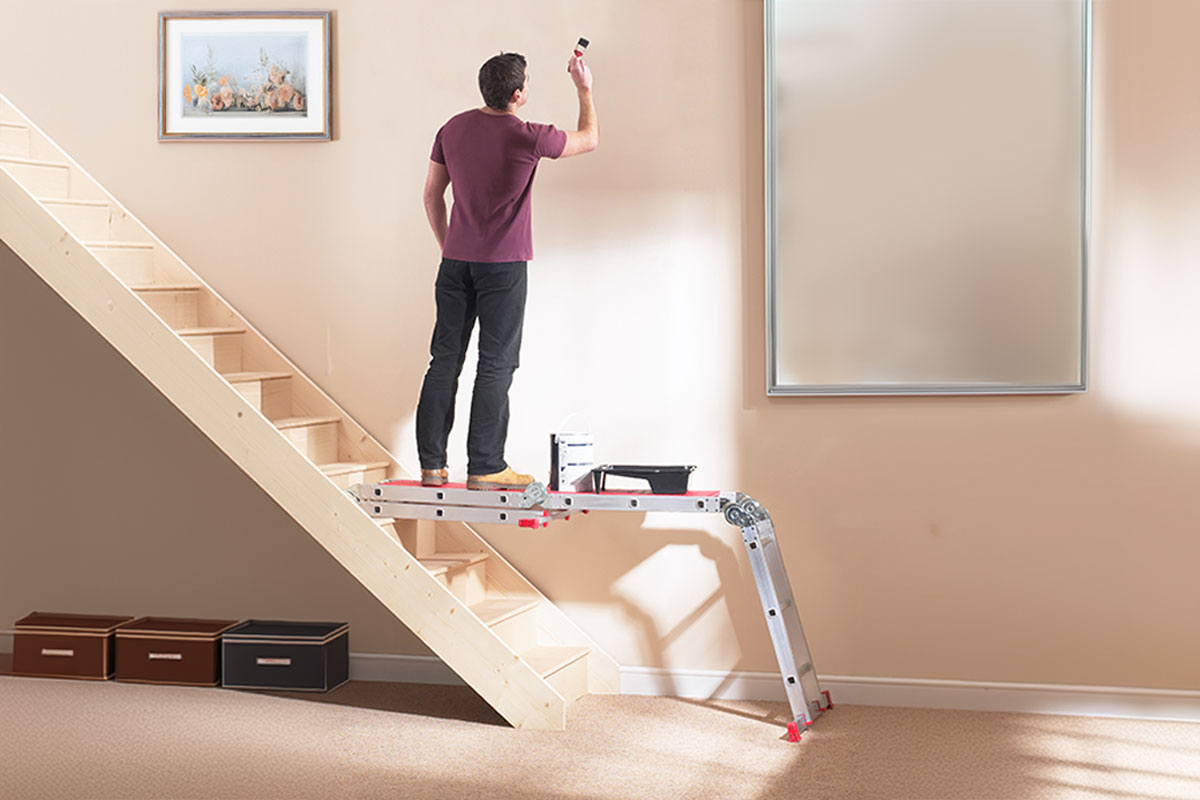Swingback vs Platform Step Ladders: Which One Do I Need?
July 29, 2025 | Nate Cord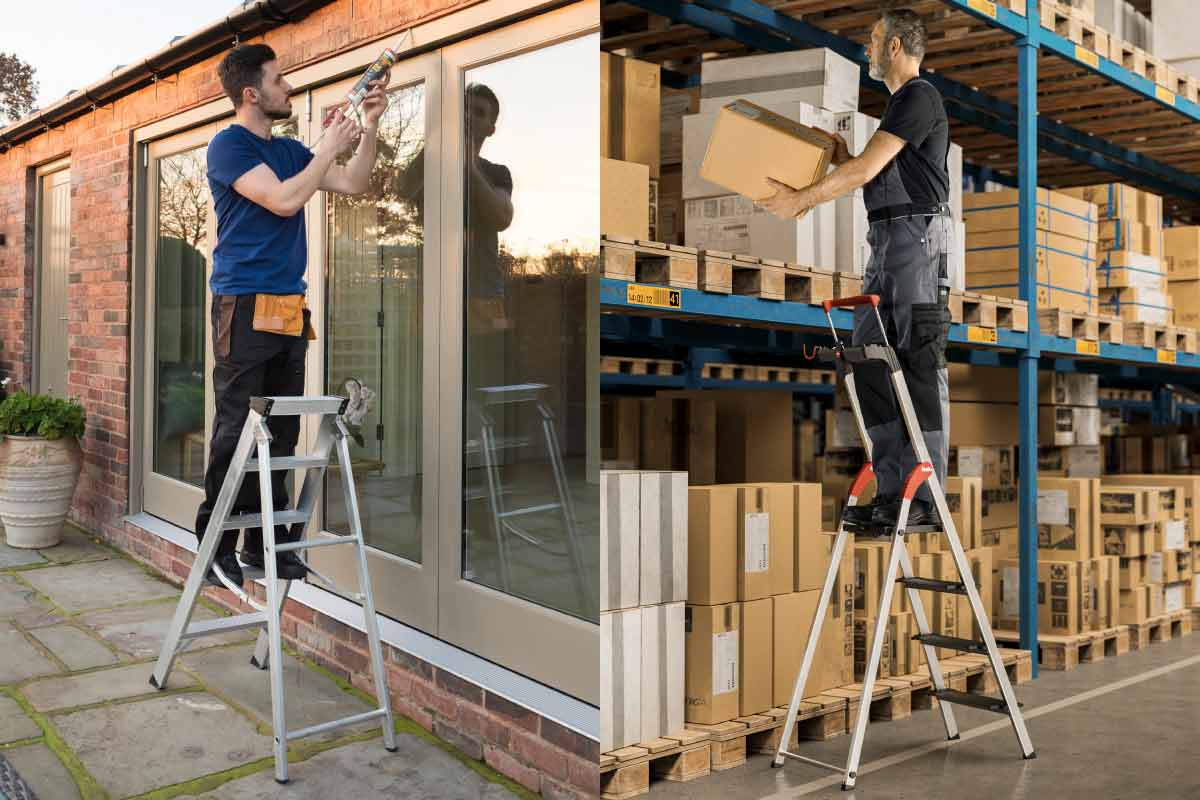
Step ladders are self-supporting A-frame ladders, with two main types: platform ladders and swingback ladders. But what exactly sets them apart, and how do you know which is best for your task? In this guide, we’ll break down the key differences and what types of jobs each is best suited for, all with UK regulations in mind.
What’s the Difference Between Swingback and Platform Step Ladders?
A swingback step ladder is your go-to for basic, low-level jobs like hanging a picture, changing a lightbulb, or accessing medium-level storage. It’s compact, folds, and is manoeuvrable. On a technical level, swingbacks tend to feature narrow rungs (3-4 inches wide), with the top cap not designed for standing on.
A platform ladder, on the other hand, offers a secure, flat standing surface, sometimes with guardrails. It’s built for longer jobs like painting, wiring, or fitting, where additional support is required. Unlike a swingback step ladder, you can expect an integrated standing platform (12” x 18” or larger) with anti-slip surfacing and, sometimes, guardrails.
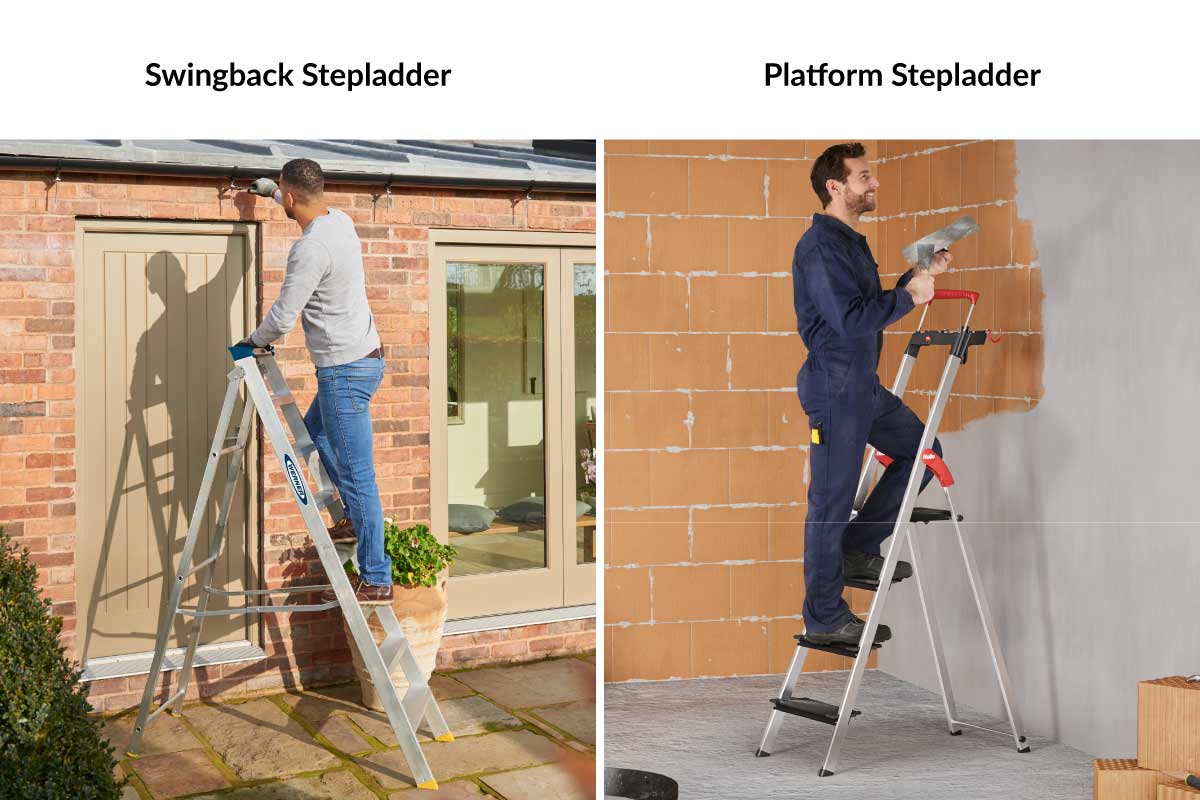
What Ladder is More Expensive?
Swingback step ladders generally start from around £42, while platform ladders may cost from £36, depending on features. Safety should always be your top priority, though.
What Ladder is Safer?
There is no one right answer as to which ladder is safer; it depends on the job at hand. Indeed, both swingback and platform ladders are safe when used properly and for the right job (fully opened, locked spreaders, not overreaching).
That said, platform ladders are generally safer than swingback ladders, particularly for tasks lasting over 30 minutes or when working above 12 feet. They offer a larger standing surface and come equipped with a top handrail that often includes a tool tray, providing a convenient place to hold tools and materials. Many also feature side safety handrails for additional support.
For prolonged work, a platform ladder or alternative equipment (like a podium step or scaffolding) should be used instead. Read our guide Ladders vs. Scaffold Towers – Which One Is Right for You for more information, or keep reading for a breakdown of what jobs each ladder is best suited for.
When to Choose a Swingback Ladder
Swingback ladders are compact, lightweight and cost-effective. This makes them ideal for:
- Quick jobs under 30 minutes, such as changing a lightbulb.
- Indoor tasks with low to medium height requirements, such as grabbing something out of reach.
- Jobs that require frequent repositioning
However, swingbacks are much less stable for extended periods of time. In fact, HSE guidelines recommend you don’t use a regular step ladder like this when the job length exceeds 30 minutes. This is where platform ladders can come in.
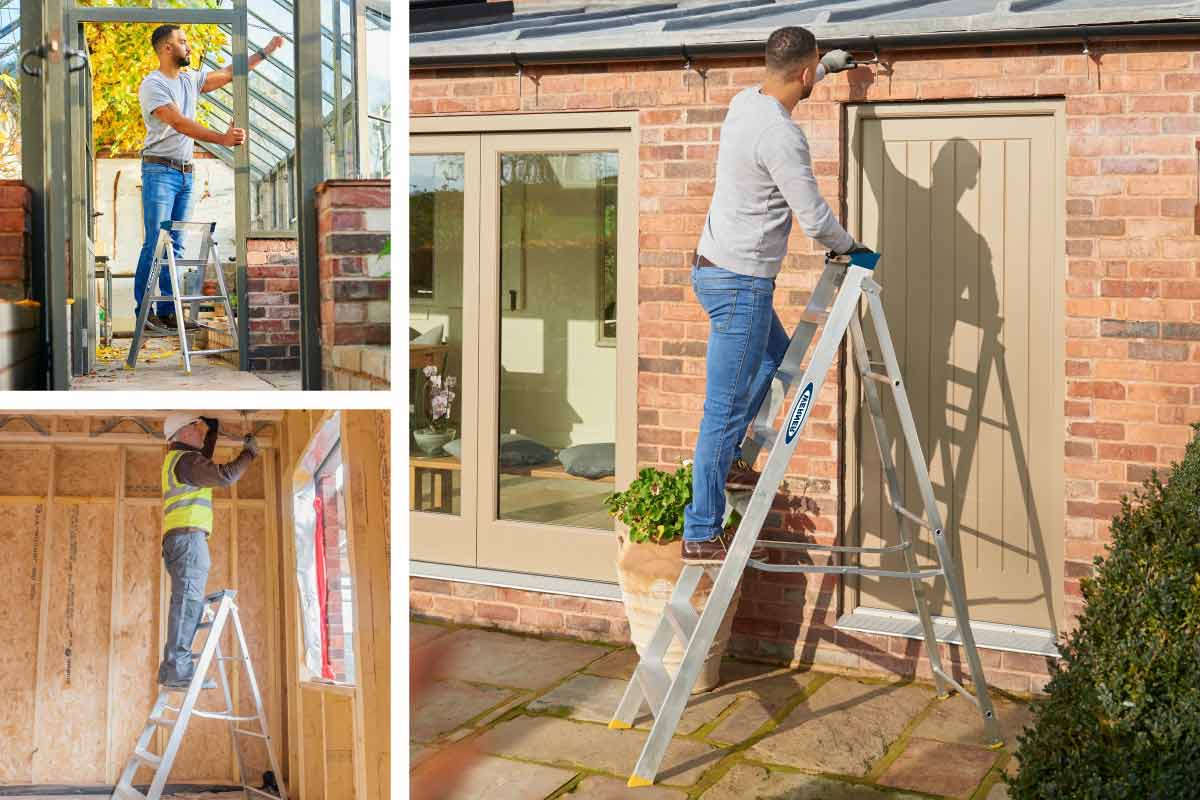
When to Choose a Platform Ladder
If your task involves staying at height for a prolonged period (> 30 minutes), a platform ladder is the safer and more ergonomic option. This is because it has a larger standing surface for better balance, and often includes safety rails, tool trays, hooks or other ladder accessories. This makes platform ladders ideal for:
- Painting and decorating.
- Electrical or maintenance work.
- Warehousing, retail, or stock picking.
- Working with both hands, e.g. drilling, screwing, wiring.
- Environments needing maximum stability (warehouses, shops, slightly uneven ground).
Platform ladders are generally better on uneven ground or outdoors, thanks to a wider base and often more robust construction. Our range of trade-grade step ladders features extra-comfort platforms for all-day jobs.
The downside? Much heavier, bulkier and harder to manoeuvere than swingback ladders.
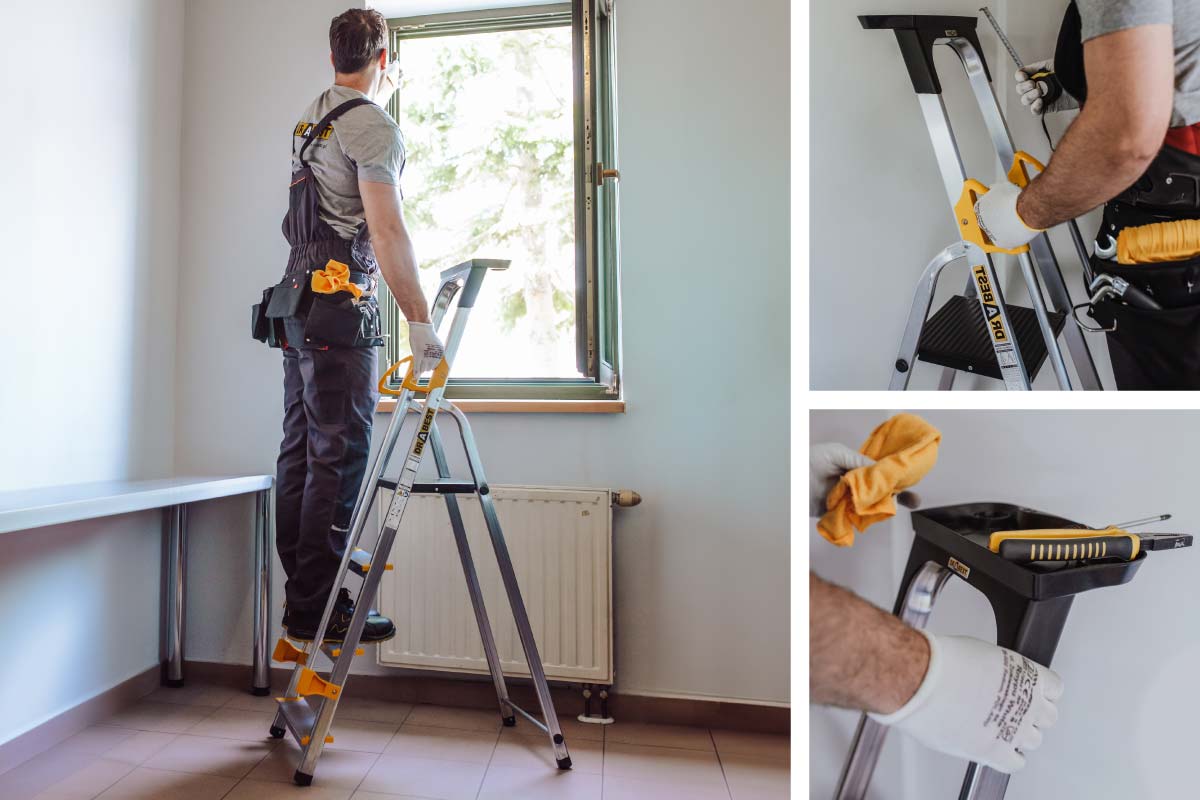
How to Choose Between a Swingback and Platform Ladder
This should have helped you determine when you would need each type of ladder. But if not, we’ve broken it down further. Here’s what to consider when choosing between swingback and platform step ladders.
How long will I be standing on it?
The HSE states that if your task requires using a step ladder for more than 30 minutes, it is recommended that you use alternative equipment.
More than 15 minutes → Platform or other access equipment.
Less than 15 minutes → Swingback.
What height do I safely need to reach?
up to 2.0m → Swingback.
Higher than 2.00m+ → Platform.
Will you be using tools or handling materials at height?
Yes → Platform.
No → Swingback.
Will I be moving it constantly?
Yes → Swingback.
No → Platform.
Do you want extra stability and a place to rest tools or parts?
Yes → Platform.
No → Swingback.
Is it a quick job like changing a bulb or grabbing an item from a shelf?
Yes → Swingback.
No → Platform.
Do you need a top handrail or safety guard for balance?
Yes → Platform.
No → Swingback.
In short, choose a swingback ladder for short, quick-access jobs where frequent manoeuvring matters. Choose a platform ladder for longer, hands-on tasks requiring more support. Remember: Always follow EN131 & HSE guidelines for safe ladder use.
- Always maintain three points of contact.
- Don’t use the top rung of a step ladder unless it’s a designated platform.
- Ensure your ladder is EN131 certified (especially for professional use). Read more about ladder classification here.
- Inspect regularly for wear, loose rivets, or bent frames.
- Use a fibreglass (non-conductive) platform ladder when working in electrical environments.
If you require additional advice or have a question for our team on step ladders, swingback ladders, platform ladders or other access solutions, don’t hesitate to contact us using this form or via phone at 01639 849847.
Looking for a reliable ladder or other premium access equipment? At Ladders4Sale, we offer a range of ladders, platforms, steps, towers and accessories for all trade and do-it-yourself jobs at unbeatable low prices. Better yet, all of our products come with lifetime support – after your initial purchase, we continue to provide ongoing support and assistance for free. In addition to this, all orders come with free shipping to mainland UK.
Be the first to know the latest industry news and offers
